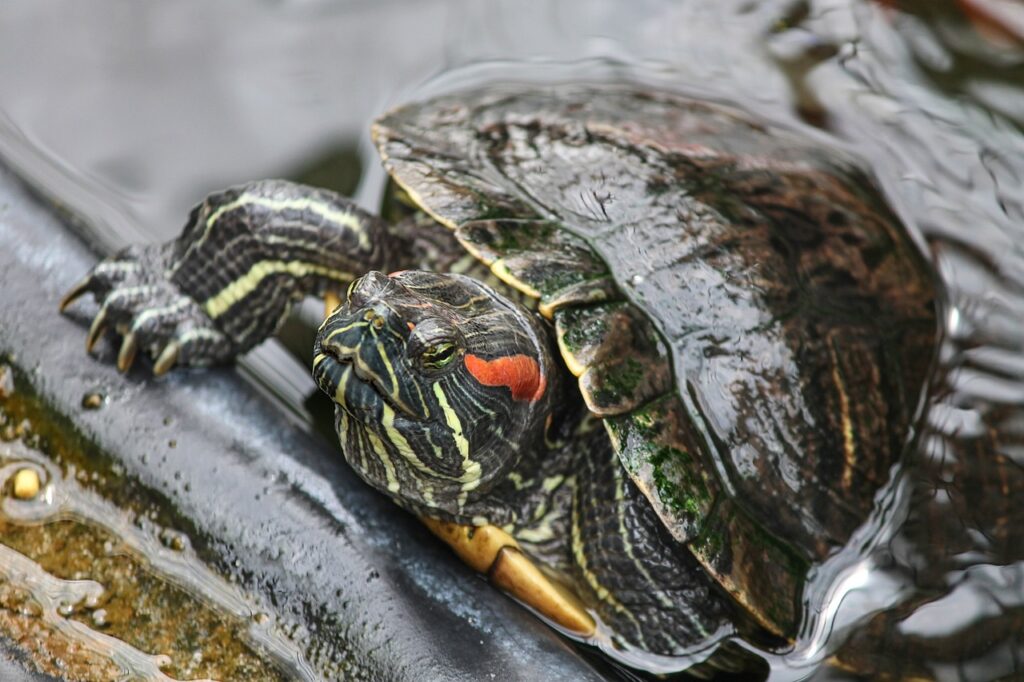RED-EARED SLIDER
Trachemys scripta elegans

LENGTH

20 cm
WEIGHT

3,2 kg
LIFESPAN

30 years
The red-eared slider is a semi-aquatic turtle native to North America and Mexico, but now found in many other countries due to trade.
General characteristics
Its carapace is green, although it eventually turns brown with a few yellow markings. The underside of the carapace is yellow with black spots, and its most distinctive feature is the red spots behind the ears, hence the name.
Feeding
Its diet is mainly carnivorous, although it may sometimes consume some vegetables. Its diet mainly includes shrimps, shrimps, small fish and earthworms, among others.
Behaviour
They are quite skittish animals, and as they spend most of their time basking in areas close to the water, when they are frightened or perceive danger they jump into the water very quickly, as they feel safer if they are in the water.
Reproduction
The red-eared slider usually has two oestrus periods. It is an oviparous species, so females dig nests to lay eggs near the wetland. Incubation usually lasts two to two and a half months.
Threats
They have hardly any threats, in fact, they themselves pose a threat to many native species as many tortoises that were pets have been released into the wild without any kind of control. They are a very territorial species with a strong character.
Distribution
These turtles have been heavily traded as pets and are now present in many parts of the world, but they are native to northern Mexico and the southern United States. They seek out places where there is water and they can bask in the sun, such as wetlands, ponds, small streams and so on.

Did you know?
They are known as Japanese turtles, although they are not from Japan.
It is considered an invasive species.
It can be confused with the leper tortoise.
Conservation status
